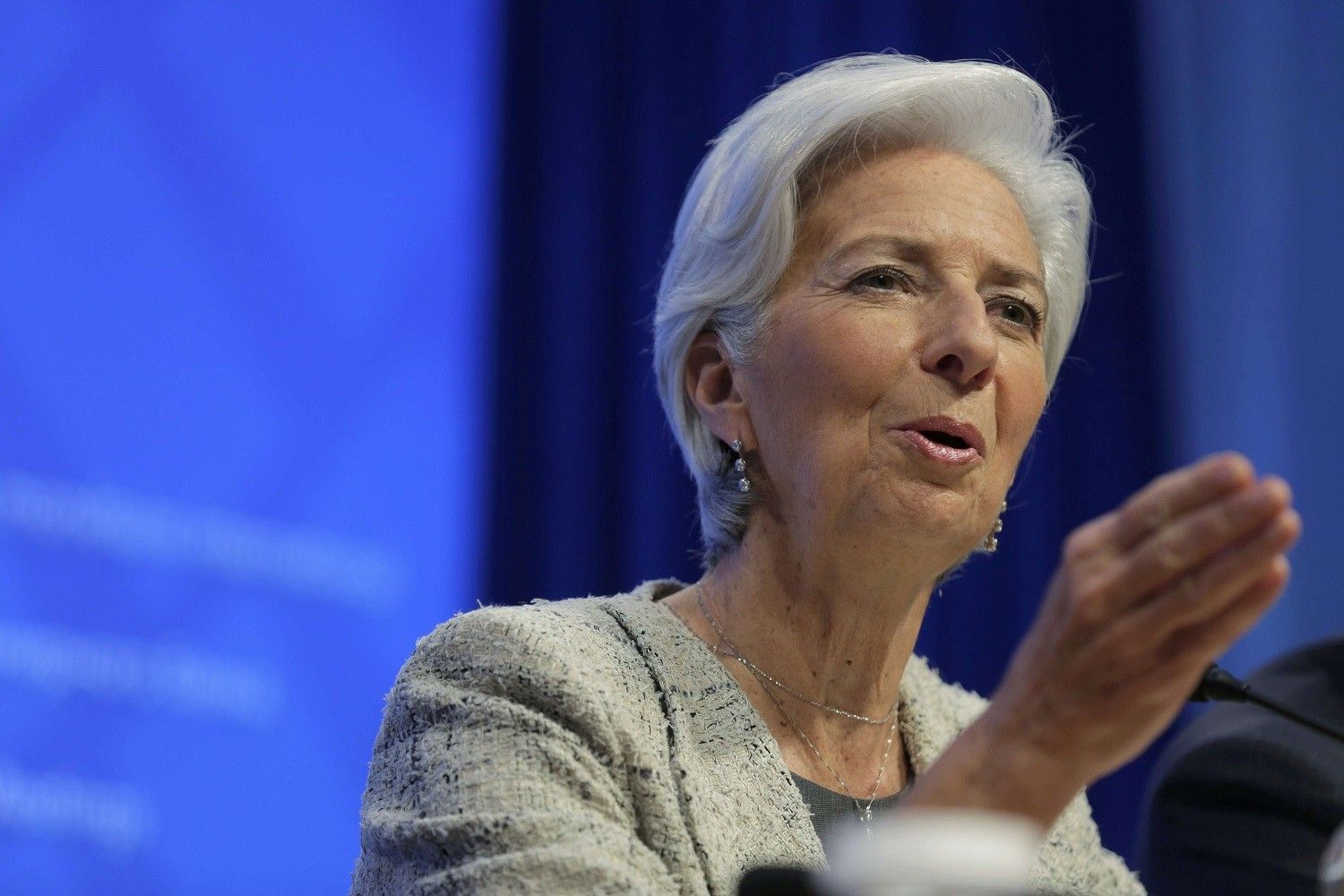
Week's balance: IMF's negative outlook, falling oil prices, and pleasant forex news
The collapse in global stock markets pulled down oil prices, which heralds a reduction in the cost of fuel in Ukraine. At the same time, the IMF has worsened the economic outlook for Ukraine in 2019, not ruling out unemployment growth. At the same time, the hryvnia seems to have stopped its plunge.
The past week was marked by anxious tensions in the global financial markets. On Monday, the International Monetary Fund announced its worsened global economic outlook for 2018 and 2019, with the projected growth decreasing from 3.9% to 3.7%. The reason is trade wars, especially those between the U.S. and China.
After the release of the IMF forecast, world's leading stock indices fell to record lows. On Wednesday, U.S. majors went down, including NASDAQ 100, S&P 500, and Dow Jones, all slipping by an average of 3-4%.
IMF Governor Christine Lagarde, speaking at the annual meeting of the IMF and the World Bank on Thursday, warned of threats of trade and currency wars, stating that they could hinder global economic growth and affect innocent witnesses.

Lagarde said the best response to the ongoing tensions is to “de-escalate, fix the system, don’t break it.” She added that the casualties won’t just be the U.S. and China — the two largest economies in the world in the center of the current tariff fight – but also countries that are part of the global supply chain and suppliers of raw materials to manufacturers involved in the dispute. “We certainly hope that we are not moving in the direction of a trade war or a currency war. It will hurt all participants,” the head of the IMF said, according to CNBC.
Meanwhile, the fall of stock indices continued as a chain reaction. On Thursday, European stock indices fell to their lowest levels in more than 20 months following the U.S. drop amid concerns about the yield on U.S. bonds. Then the main stock indices in China, Japan and Korea also appeared in the "red zone." Market players sharply started selling shares.
The statement by the head of the World Bank, Jim Yong Kim, about the work starting with China and all other countries-shareholders on preparing for the deterioration of the conditions of world trade, added fuel to the fire. He noted that the latest developments are on the agenda of all countries and international organizations. According to Kim, if all countries involved in foreign trade today face trade restrictions, the pace of global economic growth will certainly decline.
Incidentally, at the end of September, the World Trade Organization lowered the forecast for world trade growth in 2018 from 4.4% to 3.9%.
Businesses are already wondering if this might be the start of a new global financial crisis. Indeed, this is how the latest global crisis started back in 2009. Obviously, Ukraine will not be able to isolate itself from it.
Ukraine forecast disappointing

The IMF outlook for Ukraine also turned out to be not too optimistic. While for the end of 2018, the Fund improved GDP growth estimates to 3.5%, in the next two years the rates will noticeably decrease: in 2019 – from 3.3% to 2.7%, and in 2020 – from 4% to 3.4%.
It is worth recalling that, according to the First Deputy Prime Minister, Minister of Economic Development and Trade Stepan Kubiv, to achieve powerful and tangible results, GDP growth should be about 5-7% annually.
The Fund in its report changed the forecast not only for Ukraine, but also for other countries. In particular, the figures for Moldova were adjusted drastically, which led to a significant improvement in its results. Now the country ranks 133rd globally with its GDP's $2,694.47 per capita, followed by Ukraine at 134th place with $2,656.01 per capita.
The official average salary in Moldova appeared to also be significantly higher than in Ukraine. In the second quarter of 2018 it was $375.82, while in Ukraine it was $325.53. According to this figure, our country ranked last in Europe.
The latest report by the National Bank of Ukraine was not too pleasing either. The actual inflation rate in Ukraine in September at 8.9% in annual terms was higher than the NBU forecast published in July (8.3%) due to the comparative basis and fuel prices. The National Bank reported that core inflation in September remained at the level of the previous month (8.7% year-on-year), while the rise in fuel prices accelerated to 22.7% in annual terms amid a rapid increase in world oil prices and a weakening hryvnia exchange rate.
Oil rose in price throughout September, which resulted in gasoline rising at gas stations, almost daily beating yet another “psychological mark.” Last Monday, the retail price of A-95 gasoline reached UAH 32.83/liter, and UAH 30.84/l for diesel fuel.
However, global oil prices, after posting record highs, fell following the U.S. stock market indices, despite the decline in Iranian exports due to U.S. sanctions. On Thursday, Brent slipped by 2%.
Hryvnia "freezes" at bottom

There were some pleasant forex news for Ukrainians in the past week. Before the weekend, the U.S. dollar dropped 2 kopiykas below the psychological mark of UAH 28. On October 12, the National Bank set the hryvnia to dollar rate at UAH 27.98 to the dollar. Analysts believe that the dollar will be in a narrow range until the end of October. The minimum mark is UAH28/USD, while the max is UAH28.5/USD.
“Due to the lack of global drivers for the shifts of our national currency, we will remain at the current values of a narrow range of UAH28.00 -UAH28.50/USD until the end of this month. It is not worth expecting a depreciation below UAH28," said Alpari analyst Maksym Parkhomenko.
Although the beginning of this month turned out to be a favorable period for the national currency, the expert is confident that the tranquility of the hryvnia is temporary.
“The current dynamics should not be perceived as a global improvement in the market and for the hryvnia, rather, as a small respite before further decline,” emphasizes Parkhomenko.
His words are confirmed by the already mentioned October IMF outlook. The International Monetary Fund predicts that the average annual hryvnia exchange rate in 2018 will be UAH27.07/USD, in 2019 the national currency will devalue by 5.89% - to UAH28.655 per dollar, and in 2020 – by another 4.43%, to UAH29.925 to the dollar.
Liudmyla Rosyk

